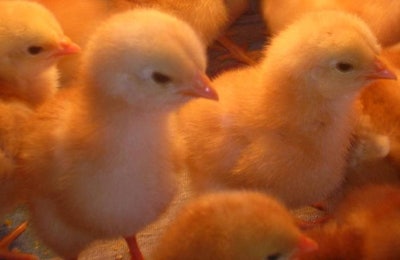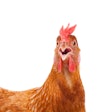
A recent high court decision means that the culling of male chicks from layer lines can continue in Germany, but only until an effective and practical method is available for sexing the embryos during incubation.
For some years, pressure has been mounting in Germany to end the culling of male chicks from laying hen lines after hatching. In June, the high court in Leipzig ruled that the continuation of the practice is reasonable, but only because alternatives will likely soon be available.
One of the central principles of the country’s animal welfare act is that “no one may inflict pain, suffering or harm on any animal without a reasonable cause,” according to the Bundesverwaltungsgericht or Federal Administrative Court. In contrast to other European Union states, this law in Germany aims to protect the animal’s life as well as its well-being.
The court ruled that economic interests are not reasonable grounds for continuing the practice, but that a continuation of male chick culling is reasonable until alternatives in the form of egg-sexing methods are available. Such alternatives on a commercial scale are expected in the near future.
Since 2015, the plaintiff — a hatchery — has been forbidden by law to cull these chicks. However, the hatchery has argued in a series of lower court hearings that the male chicks are unsuitable to be reared for meat, owing to their slower growth and inferior conformation compared to chickens from broiler lines. As a result, in commercial practice worldwide, these birds are humanely killed soon after hatching by maceration or gas. In 2012 and Germany alone, this affected an estimated 45 million chicks.
The decision of the court is based on the premise that the life of the male chick has no intrinsic value under the current practice, and that therefore the killing of male chicks is no longer based on reason. However, it accepted that the practice has been routine for decades, starting at a time when there was less emphasis on animal welfare.
According to the court, hatcheries should not be required to change their methods immediately. If this were case, all hatcheries would have to start rearing the male chicks—at “great expense”—and then shortly afterwards, they would be required either to set up an in-ovo sexing procedure, or to convert the operation to the hatching of eggs from dual-purpose lines.
The avoidance of such a double conversion is reasonable grounds for the temporary continuation of previous practice, according to the Court ruling.
Commenting on the decision, Federal Agriculture Minister Julia Klöckner re-stated her opinion that the killing of male chicks is not justifiable for ethical reasons.
The agriculture ministry has already offered grants totaling EUR8 million (US$9 million) to fund research into alternative solutions, she said, including the rearing of the male chicks, and the development of dual-purpose lines.
This research has led to the successful development last year of a method to determine the sex of the embryo in-ovo, and Klöckner urged hatcheries nationwide to introduce the technology as soon as possible.
Alternatives to culling male chicks developed in Germany
In order to help Germany’s egg industry to address the issue, the agriculture ministry has promoted a number of options that could contribute to the ending of killing day-old male chicks from layer lines.
With funding of EUR2 million, it has supported research into rearing of the male chicks for meat, and the development of dual-purpose lines. The “Bruderhahn” process — involving the rearing of male layer chicks — has been adopted on a small scale, with the meat processed into organic products. Dual-purpose birds have generally less well accepted, however, because the hens lay fewer, smaller eggs than current commercial layer birds, and the males grow more slowly than broiler lines, and produce less breast meat.
More promising, according to the ministry, is the determination of the bird’s sex while it is still in the egg. This has been achieved by two different approaches.
One is based on an endocrinological procedure — the Seleggt process — whereby some fluid is removed from the egg at around 9 days of incubation. Biotechnological methods are used to analyze the fluid, and determine which eggs contain male embryos and which contain females. The technique is being used on around 30,000 embryos per week, according to the ministry.
Another option uses spectroscopic methods to separate male and female embryos through the different patterns in which they reflect light. This method — developed by Agri Advanced Technologies GmbH (AAT) with ministry funding — can be carried out from day 4 of incubation. While the female embryos continue incubation, eggs with male embryos are removed from the hatchery, and are used in the cosmetics industry. The AAT method is currently being scaled up for commercial use.
Culling male layer chicks is not only an issue in Germany. Methods of egg sexing technology are being developed around the world, aimed at bringing to an end the global culling of an estimated 3.2 billion male chicks of layer lines annually.

















